
-
Find the right food for your petTake this quiz to see which food may be the best for your furry friend.Find the right food for your petTake this quiz to see which food may be the best for your furry friend.Featured products
 Adult Small & Mini Lamb Meal & Brown Rice Recipe Dog Food
Adult Small & Mini Lamb Meal & Brown Rice Recipe Dog FoodFor the faster metabolism of Small & Mini dogs
Shop Now Hill's Science Diet Adult Oral Care Chicken, Brown Rice & Barley Recipe Dog Food
Hill's Science Diet Adult Oral Care Chicken, Brown Rice & Barley Recipe Dog FoodClinically proven kibble technology to reduce plaque & tartar build-up
Shop Now Adult 7+ Small & Mini Chicken & Brown Rice Recipe Dog Food
Adult 7+ Small & Mini Chicken & Brown Rice Recipe Dog FoodFor the unique nutritional needs of mature Small & Mini dogs
Shop NowFeatured products Adult Urinary Hairball Control Chicken & Rice Recipe Cat Food
Adult Urinary Hairball Control Chicken & Rice Recipe Cat FoodActively supports the health of the whole urinary system
Shop Now Adult Indoor Chicken Recipe Cat Food
Adult Indoor Chicken Recipe Cat FoodSupports energy level and beautiful fur in indoor cats
Shop Now Hill's Science Diet Adult Sensitive Stomach & Skin Dog Food
Hill's Science Diet Adult Sensitive Stomach & Skin Dog FoodHighly digestible recipe, gentle on stomachs. Nourishes skin & promotes a lustrous coat
Shop Now -
Featured articles
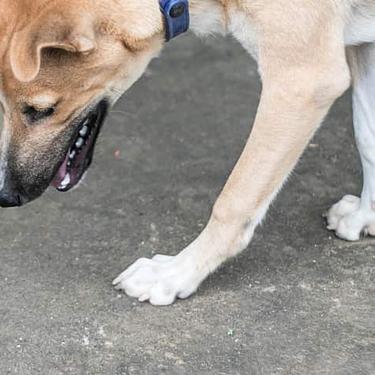 My Pet Ate a Lizard — What Should I Do?
My Pet Ate a Lizard — What Should I Do?Learn what to do if your pet eats a lizard, including whether they can be toxic and symptoms to keep an eye on when they've swallowed one.
Read More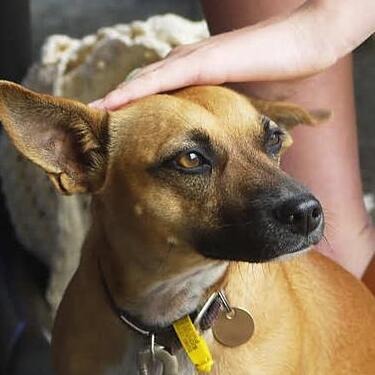 15 Pet-Friendly Cities Ideal for a US Road Trip
15 Pet-Friendly Cities Ideal for a US Road TripCheck out our list of pet-friendly U.S. cities that are excellent travel options, offering off-leash dog parks and pet-friendly restaurants & hotels.
Read More Easy DIY Dog & Cat Toys: Nine of Our Favorites
Easy DIY Dog & Cat Toys: Nine of Our FavoritesBrowse this comprehensive guide for several of our favorite DIY dog and cat toys that are sure to put a little pep in your pet's step.
Read More -


Cats are often a mystery to us, but they are still fascinating to study. Read on to learn more about what science can tell about these lovable, independent creatures.
How High Can Cats Jump?
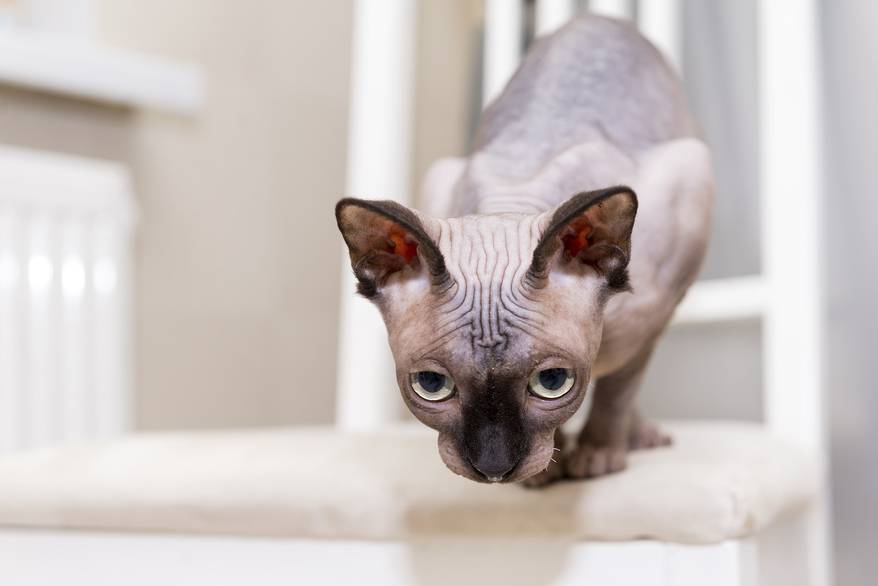
Don't think that your tuna sandwich is safe from your pet's reach if you place it on top of the fridge. Cats have been identified being able to jump five to six times the length of their bodies. This means that some large domestic cats are capable of leaping up to heights of 8 feet or more off the ground. It's the combination of strong leg and back muscles and excellent muscle and eye coordination that enables tiny cats to make such amazing leaps.
How Fast are Cats?
Ever wondered how your cat is able to track down small rodent prey? Some of it is their flexibility and quickness, some of it is their hunting instincts and some of it is that cats have their zoom turned up a notch. The fastest domestic cats can run up to 30 mph, which is two miles per hour more than the fastest human has ever run. Abyssinians, Somali and Bengal cats are some of the fastest breeds according to Cuteness. While the fastest domestic cat will still lose in a sprint to a number of different dog breeds, their quick twitch muscles allow them to make quick adjustments and change direction really easily.
Do Cats Always Land on Their Feet?
Cats do land on their feet the majority of the time — but not always, says Animal Planet. When a cat experiences a fall, her reflexes automatically take over to orient her body in an upright position. Whether she successfully lands on her feet, however, depends on whether there is enough time for her body to finish righting itself before hitting the ground.
A survey of veterinarians who have treated cats injured in falls observed that cats who survived falls from five stories or higher tended to have less severe injuries than those who fell from fewer than five stories. Another factor allowing cats to survive jumps or falls from great heights is that their leg and shoulder joints are designed to function as shock absorbers, helping to minimize damage to their skeletons on impact with the ground. Never test this theory, however. While cats are great at mid-air ninja moves, falls can take a toll on their bodies, so it's best to let them decide when to test out gravity.
How Well Do Cats Hear?
The science of cats tells us that cats can hear frequencies of up to 64,000 hertz, according to The Spruce Pets. That's 44,000 Hz higher than the top range of human hearing, and 19,000 Hz higher than what dogs can hear! Part of the reason cats hear so well is that their erect, cone-shaped ears are not only excellent at catching sound waves, but also at greatly amplifying them. Cats also have about 32 sets of muscles in their ears that allow them to move them 180 degrees, notes Mother Nature Network. This excellent hearing is part of what makes cats such good hunters, allowing them to sit still and listen for signs of nearby prey. So, if you're expecting to play a game with tag with your cat, you're likely to not come out a winner.


Tasty Tips
How Well Do Cats See?
A cat's field of view is about 200 degrees, which is about 20 degrees greater than that of humans, explains Popular Science. Cats also have more expansive peripheral vision than we do. And when it comes to seeing in the dark, cats have it made thanks to the eight-fold increase in rod cells in their eyes, which enhances their ability to detect objects in low light.
This night vision is also aided by the elliptical shape of a cat's eye, the enlarged corneas and the reflective layer of tissue at the back of the eye called the tapetum lucidum. This layer reflects light back to the retina and is also the reason cats' eyes sometimes appear to glow in the dark. However, cats have far fewer cone cells in their eyes than humans do, which means their ability to perceive color is limited mainly to grays and blues. Cats are also more nearsighted than humans, meaning we have slightly sharper vision at a distance.
How Do a Cat's Claws Retract?
To say that cats have retractable claws is actually a misnomer, says Cuteness. A more accurate description is that cat paws contain sheaths that cover the claws when not in use. When a cat becomes excited or startled, a stretchy ligament connecting the claw to a bone in the toe is pulled back, leaving the claws exposed. If not for the ability to cover their claws when not in use, kitties would have the unfortunate problem of getting their claws stuck in all kinds of surfaces.
Why Do Cats Come in So Many Patterns and Colors?
While there aren't as many cat breeds as there are dog breeds, the variety of traits found in domestic cats is still pretty amazing. Small cats have been domesticated for thousands of years, and the human practice of selectively breeding cats to bring out certain dominant genetic traits goes back almost as far, says PawedIn. This practice is why we have purebred cats, such as Siamese, Himalayans and Russian blues.
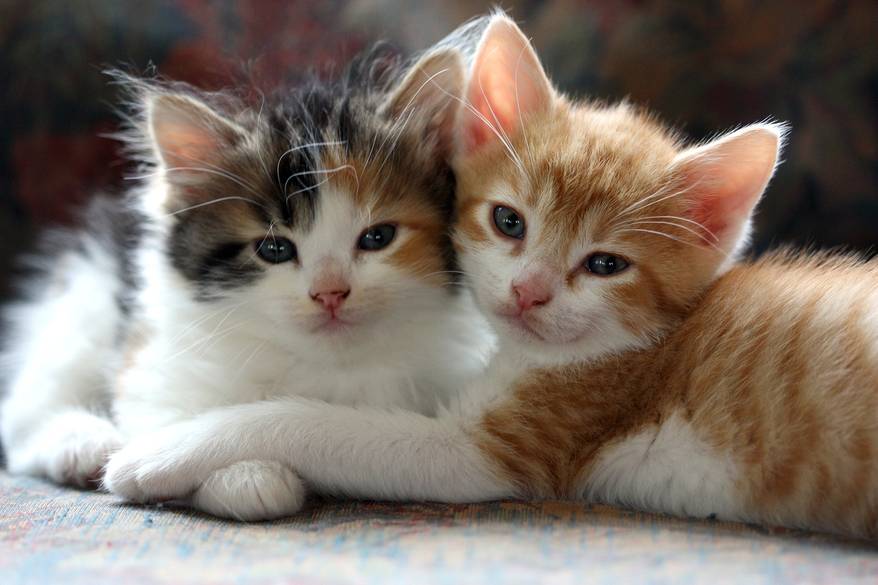
When it comes to appearance, your cat's biology offers a limited number of traits. This is why typical non-purebred house cats, also referred to as domestic shorthair cats, tend to fall into a predictable range of coat patterns. These include tabby, tuxedo, calico and tortoiseshell patterns, as well as solid color, bi-color and tri-color coats. Colors are typically black, white, gray, brown, blue-gray, rust, orange or some combination of those colors. The pattern and color of a kitten's coat is determined by a range of genes that control the pigmentation of the skin and fur as well as the patterns of ticking, shading and spotting that the color will fall into. PetHelpful writes that the gene for a tabby pattern alone has four variations.
Cat science shows us that your cute little Fluffy is a wild predator at heart, not all that far removed from her giant jungle cousins. Knowing that your cat is biologically adapted primarily for hunting and survival might help some of her wilder antics make a little more sense.


Jean Marie Bauhaus is a pet parent, pet blogger, and novelist from Tulsa, Oklahoma, where she usually writes under the supervision of a lapful of fur babies.
Related products
Related articles
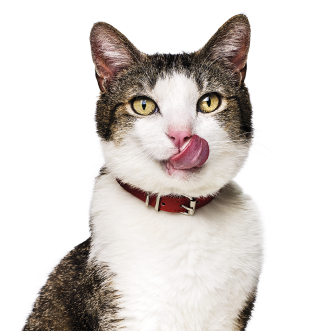
Put your cat on a diet without them knowing
Our low calorie formula helps you control your cat's weight. It's packed with high-quality protein for building lean muscles, and made with purposeful ingredients for a flavorful, nutritious meal. Clinically proven antioxidants, Vitamin C+E, help promote a healthy immune system.
Put your cat on a diet without them knowing
Our low calorie formula helps you control your cat's weight. It's packed with high-quality protein for building lean muscles, and made with purposeful ingredients for a flavorful, nutritious meal. Clinically proven antioxidants, Vitamin C+E, help promote a healthy immune system.

